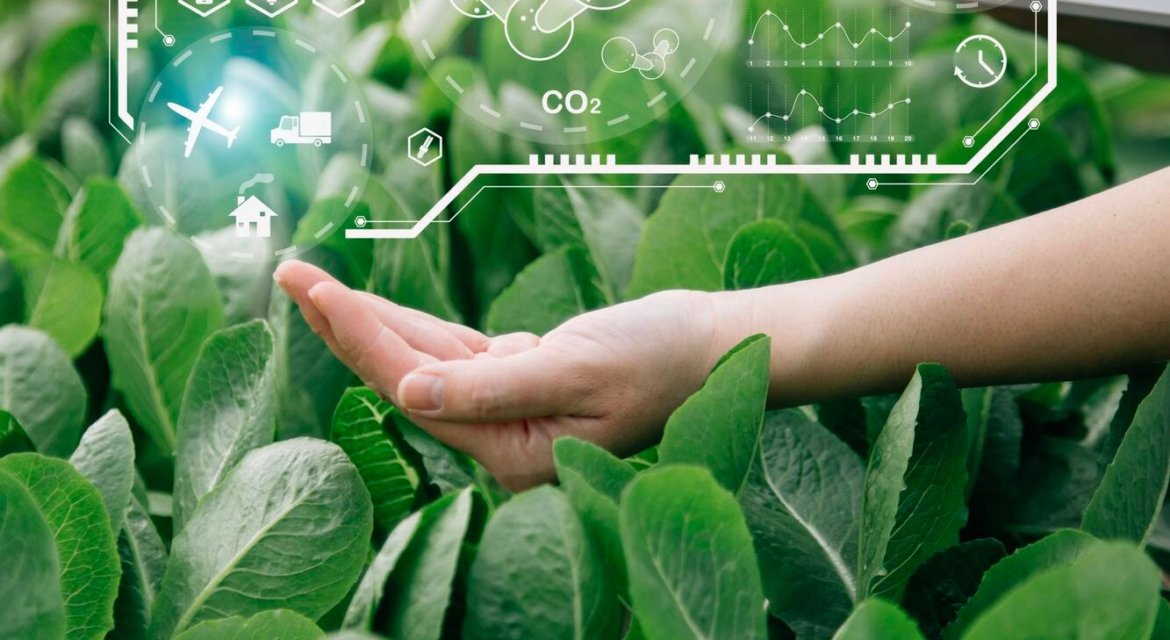No products in the cart.
 10 April 2025
10 April 2025Carbon-Neutral Farming and Agri Inputs for a Green Tomorrow
Agriculture’s Role in the Carbon-Neutral Future
Agriculture contributes up to 25% of global greenhouse gas emissions, making it both a challenge and an opportunity for climate action. As industries worldwide commit to net-zero goals, farming is undergoing a crucial transformation toward carbon-neutral practices. But the pressing question remains—can agri inputs help achieve these sustainability goals?
The answer is yes. Emerging agri inputs—biofertilizers, regenerative soil amendments, precision nutrient applications, and AI-powered soil health monitoring—are proving critical in lowering agriculture’s carbon footprint. These inputs not only reduce emissions but also enhance soil carbon sequestration, improve resource use efficiency, and support long-term sustainability.
This blog explores how agri inputs are powering carbon-neutral farming, backed by global insights, research, and examples of real-world implementation.
1. Biofertilizers – Cutting Emissions by Replacing Synthetic Nitrogen
Synthetic nitrogen fertilizers are energy-intensive to produce and contribute significantly to nitrous oxide emissions, a greenhouse gas 300 times more potent than CO₂. Biofertilizers, which use naturally occurring microbes to fix atmospheric nitrogen, offer a sustainable, low-emission alternative.
Global Trends and Growth
- Biofertilizers can reduce nitrogen-related emissions by up to 30%.
- The global biofertilizer market is projected to hit $20 billion by 2030, driven by carbon-neutral goals.
Case Study – Brazil’s Soybean Biofertilizer Shift
Brazil’s soybean sector, a major nitrogen fertilizer consumer, shifted to nitrogen-fixing biofertilizers.
Impact – Reduced synthetic nitrogen use by 25%, lowering emissions and input costs.
Why It’s Carbon-Reducing – Biofertilizers slash reliance on synthetic nitrogen, significantly cutting one of agriculture’s biggest emission sources.
2.Regenerative Soil Amendments – Turning Farmland into Carbon Sinks
Healthy soil stores more carbon than the atmosphere and all vegetation combined. Regenerative inputs like compost, biochar, and cover crops restore soil organic matter, turning farmland into powerful carbon sinks.
Global Trends and Growth
- Biochar application alone can sequester up to 1 billion tons of CO₂ annually.
- Compost-based amendments improve soil carbon levels by 40% over a decade.
Case Study – Biochar in U.S. Corn Farms
U.S. farms applied biochar to degraded soils, increasing carbon content while improving water retention.
Impact – Sequestered 35% more carbon per hectare, improving long-term soil fertility.
Why It’s Carbon-Reducing – Regenerative soil amendments capture carbon naturally while rebuilding degraded land, creating climate-resilient farms.
3. AI-Driven Precision Nutrient Management – Reducing Waste and Emissions
Fertilizer overuse results in nitrogen leaching and greenhouse gas emissions. AI-powered nutrient management tools calculate the exact input needed, minimizing over-application and environmental impact.
Global Trends and Growth
Farms adopting precision nutrient management reduce nitrogen runoff by 30% and lower emissions by 20%.
AI adoption in agriculture is growing 25% annually, driving efficiency.
Case Study – AI-Optimized Wheat Production in Canada
Canadian farms integrated AI-driven nutrient mapping, applying fertilizers precisely where needed.
Impact – 30% reduction in nitrogen use, significantly lowering emissions without yield loss.
Why It’s Carbon-Reducing – Precision inputs cut excess fertilizer use, reducing the carbon footprint of nutrient management.
4. Smart Irrigation – Minimizing Energy Use and Enhancing Soil Carbon Sequestration
Irrigation, especially when powered by fossil fuels, contributes to agriculture’s carbon footprint. Smart irrigation systems optimize water use, reduce pumping energy, and maintain soil health for better carbon storage.
Global Trends and Growth
- Smart irrigation reduces energy consumption by 40%.
- Farms using AI-driven water management saw 50% less water usage and lower fuel costs.
Case Study – AI-Based Irrigation in India
Farmers used AI models to predict water needs, reducing pump run-times and conserving energy.
Impact – Energy use decreased by 60%, while crop yields improved by 20%.
Why It’s Carbon-Reducing – Reduces energy-related emissions while preserving soil’s carbon storage potential.
5. Climate-Resilient Seeds – Reducing Crop Failure and Resource Waste
Crop failures due to climate extremes often lead to replanting, re-fertilizing, and added resource use—all increasing emissions. Climate-resilient seeds designed to withstand droughts, floods, and heat waves prevent these losses.
Global Trends and Growth
- Adoption of resilient seeds is growing 18% annually, securing food production under climate stress.
- Reduces emergency replanting emissions and resource wastage.
Case Study – Drought-Resistant Corn in Africa
African farmers planting drought-tolerant seeds ensured stable yields despite erratic weather.
Impact – 30% fewer crop failures, reducing replanting and wasted inputs.
Why It’s Carbon-Reducing – Prevents unnecessary resource use while maintaining yields under extreme conditions.
Conclusion – Agri Inputs Are Central to Carbon-Neutral Farming
The path to carbon-neutral farming runs through innovative agri inputs that reduce emissions, enhance soil carbon sequestration, and optimize resource use. Biofertilizers, regenerative amendments, AI-driven nutrient systems, smart irrigation, and climate-resilient seeds offer measurable climate benefits while improving farm productivity.
The agriculture industry can’t afford to rely solely on offsets—reducing emissions at the farm level is the real game-changer. Smart agri inputs make carbon-neutral farming not just possible, but profitable.
The question isn’t if farming will adopt these inputs—it’s how fast.
Join the Carbon-Neutral Farming Movement with Invade Agro
- Biofertilizers & Regenerative Soil Solutions
- AI-Powered Precision Nutrient Management
- Climate-Resilient Seeds & Smart Irrigation Systems
Contact us now to transform your farm into a carbon-neutral powerhouse. Sustainability isn’t optional—make it profitable with Invade Agro.
[xs_social_share]



